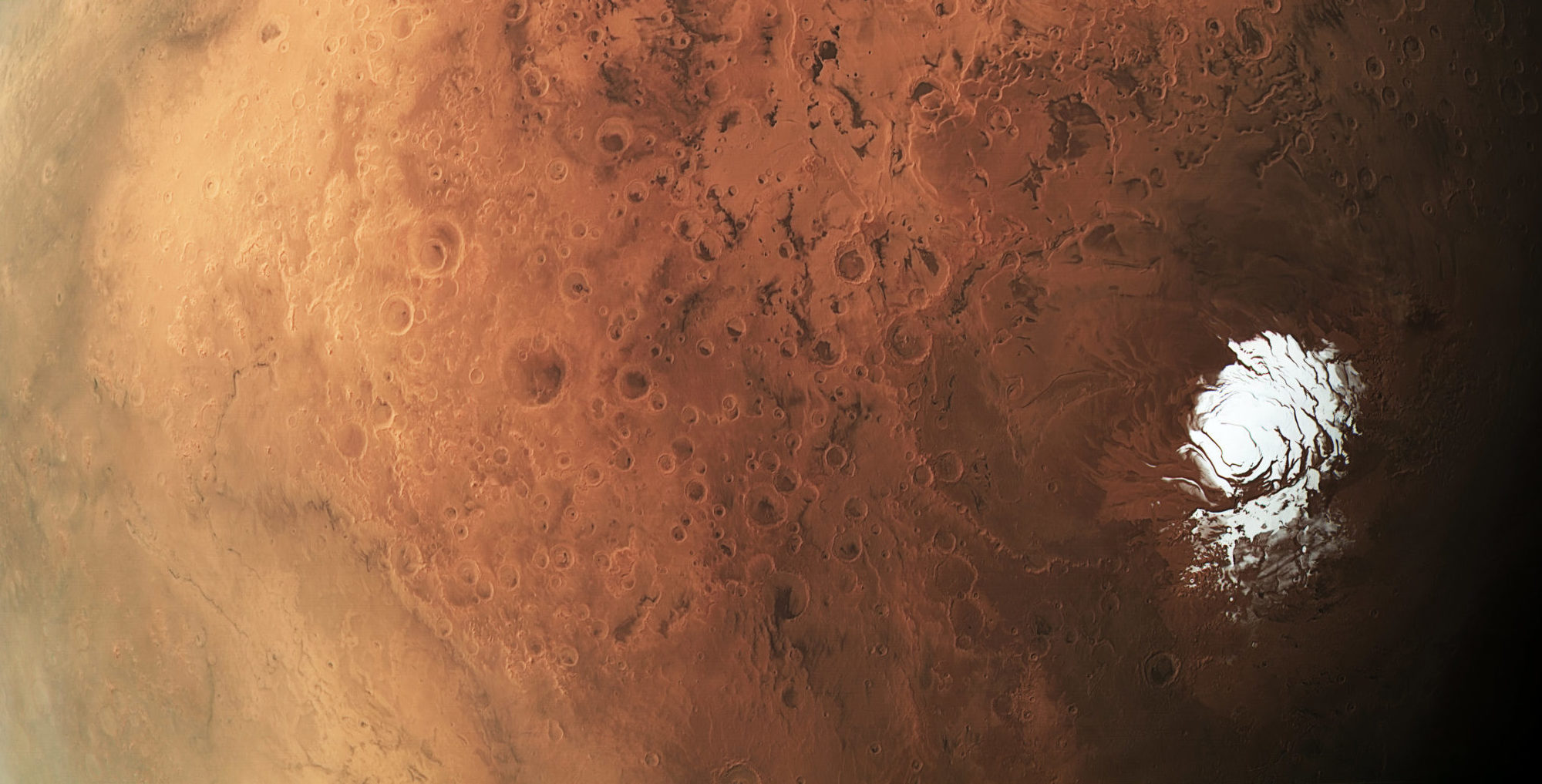In 2018, researchers discovered that may turn around our understanding of Mars, the red planet.
Radar signals reflected from underneath the planet’s surface showed a shining patch, hinting an entire network of underground lakes.
Though Mars presents water in the form of ice, not a single droplet of liquid water has been discovered on the red planet.
The new analysis has discovered dozens more of the shiny patches, part of which are in regions that are way too cold to find water, even a simple brine, which can boast lower freezing temperatures than freshwater.
Jeffrey Plaut, a planetary scientist from NASA’s Jet Propulsion Laboratory, said:
“We’re not certain whether these signals are liquid water or not, but they appear to be much more widespread than what the original paper found. Either liquid water is common beneath Mars’ south pole, or these signals are indicative of something else.”
The first particularity was found at the Martian south pole, beneath the ice cap, thanks to the Mars Advanced Radar for Subsurface and Ionosphere Sounding (MARSIS) instrument from the Mars Express orbiter which is very active and helpful in ongoing research.
A subsequent analysis of archived data showed three additional lake-like particularities.
MARSIS relies on radar signals to analyze beneath the Martian ice cap, consisting of alternating layers of carbon dioxide and water ice.
Scientists know, from using similar technology on our planet which signals are relevant and suggestive of particular materials.
The signals reflected by the subsurface patches were, indeed, stronger than the signal emitted by the surface itself, but the region where they were discovered was particularly small.
After closer analysis, Plaut and planetary scientist Aditya Khuller of Arizona State Universit discovered dozens more of the intensely reflective patches, covering a considerable range, more extensive than previously thought.









Leave a Reply